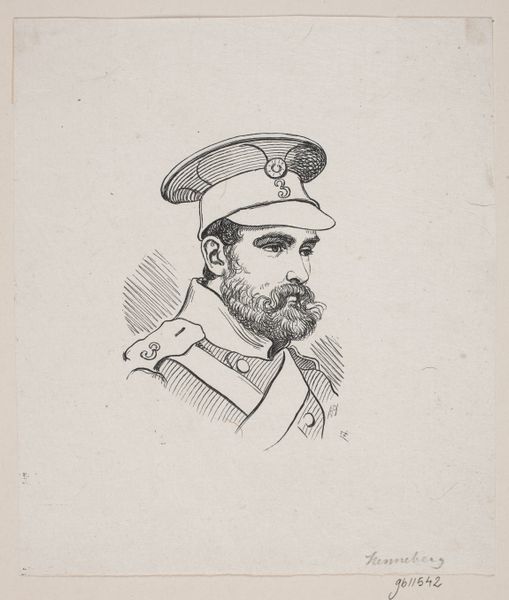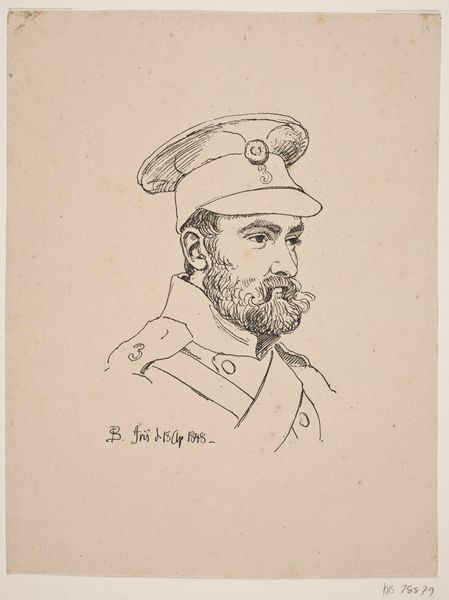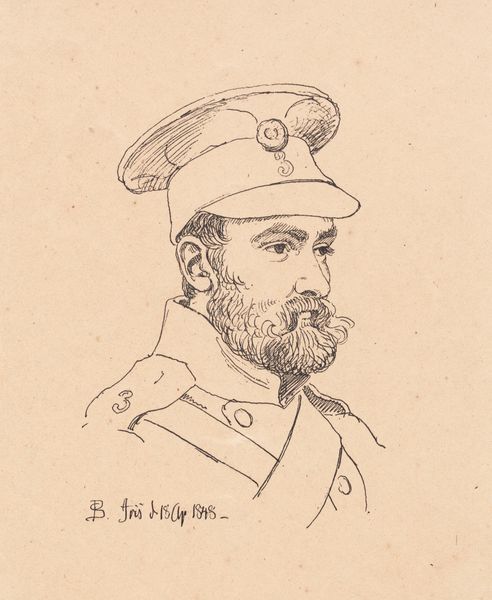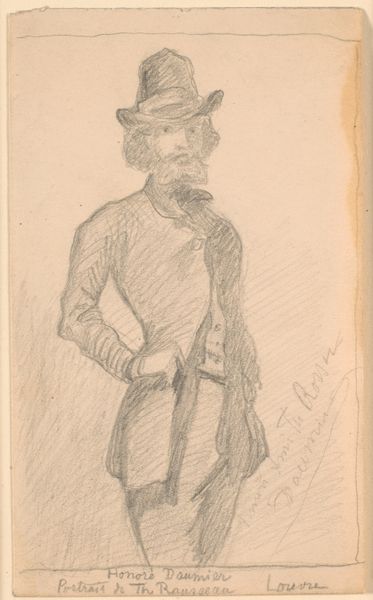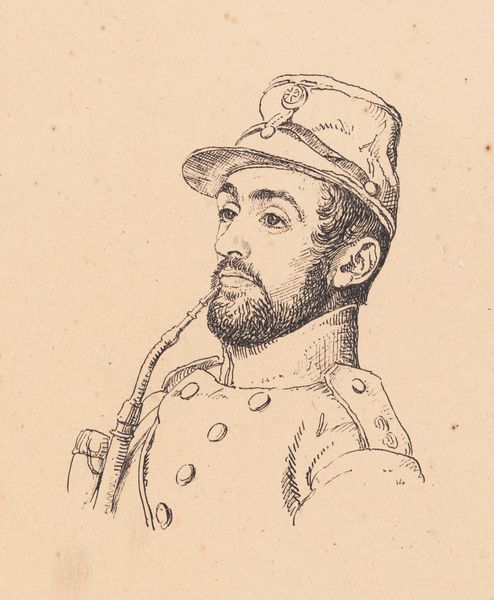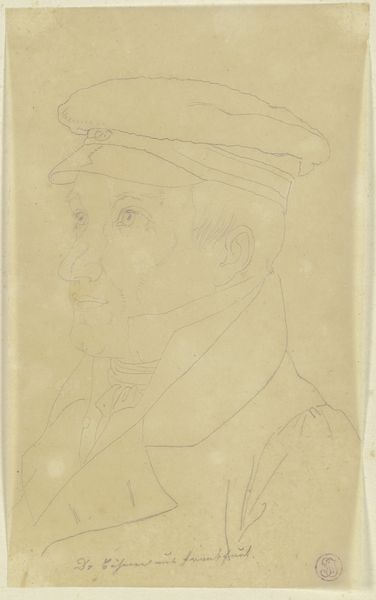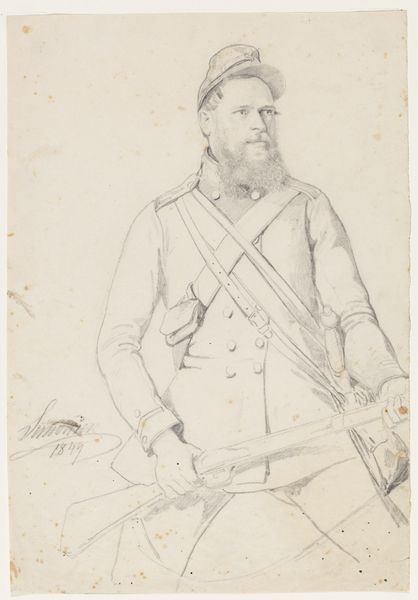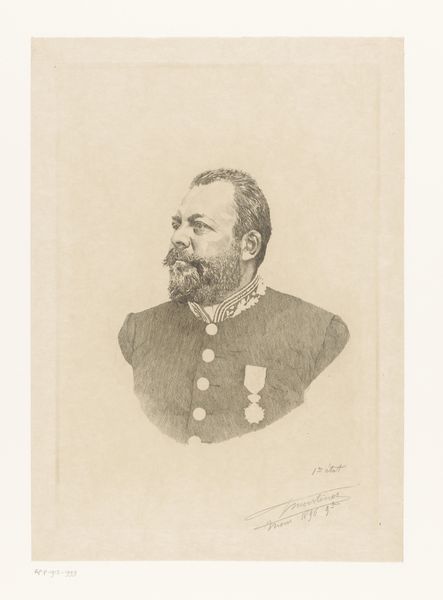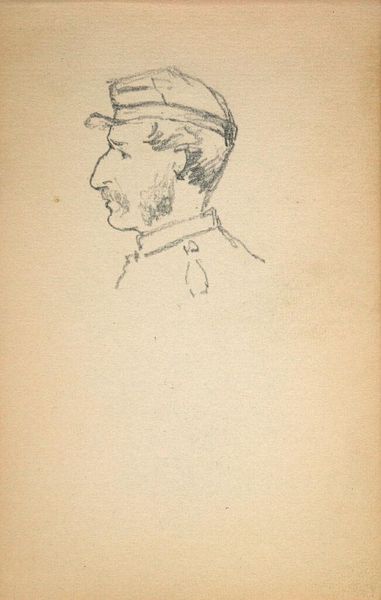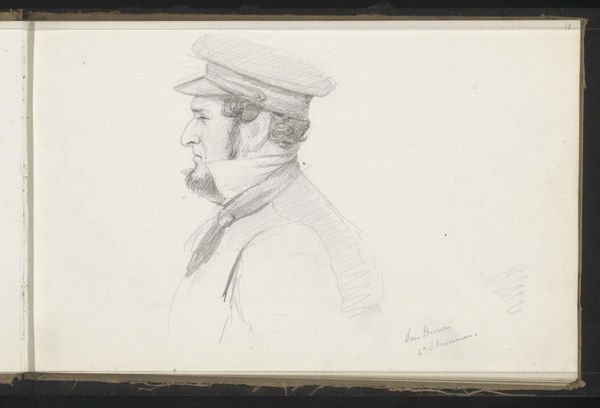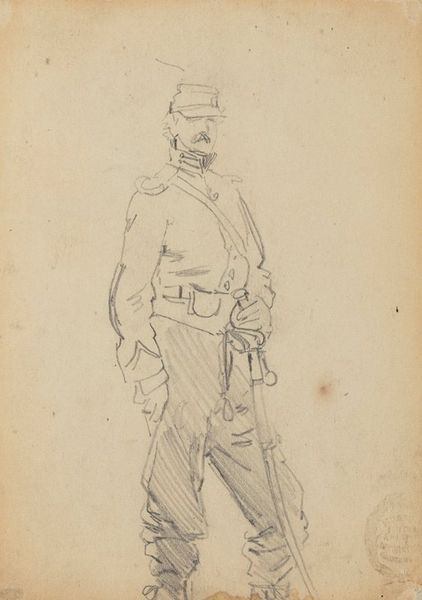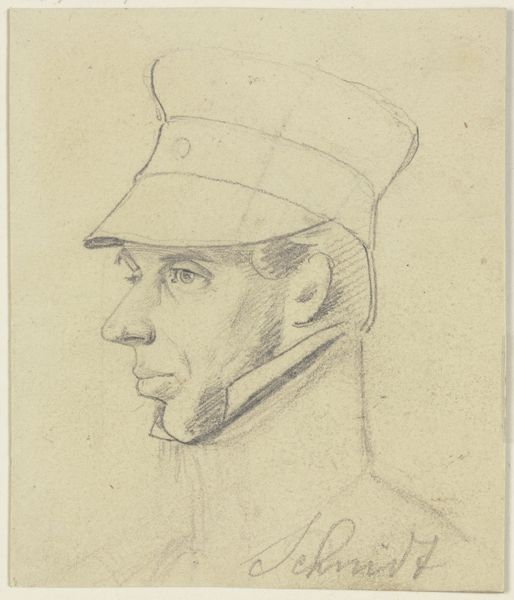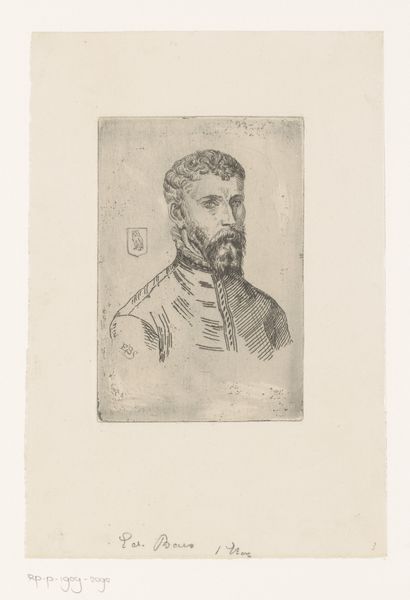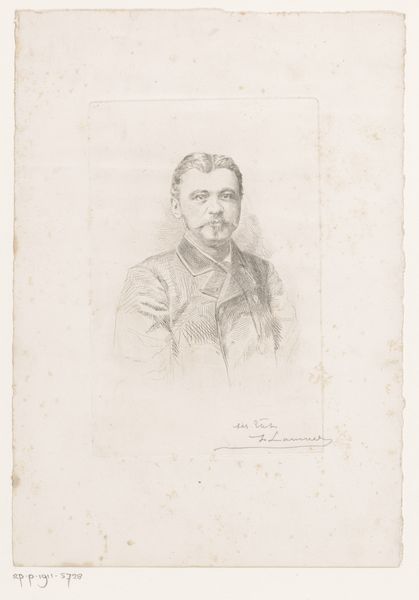
drawing, print, pen
#
portrait
#
drawing
# print
#
pencil sketch
#
pen
#
academic-art
#
realism
Dimensions: 177 mm (height) x 139 mm (width) (bladmaal)
Curator: Welcome. We're looking at a portrait drawing entitled "J. Th. Lundbye" by P.C. Skovgaard, created in 1848. It’s held at the SMK, the National Gallery of Denmark. It appears to be primarily pen, with pencil sketches present. Editor: Immediately, there's a quiet, almost melancholy air to it. The cross-hatching is minimal yet deliberate, creating shadows that lend a subtle weight to the figure's expression and overall military dress. Curator: Skovgaard’s use of line is very efficient. Observe the varied line weights: thinner, delicate strokes suggesting the softer textures of the skin and beard against bolder outlines defining the military uniform and cap. There’s a clear academic focus, but not devoid of realism. Editor: I wonder about the political context. It was created in 1848, a year of revolutions across Europe. How does portraying Lundbye in uniform speak to Danish identity at a time when nationalism and militarism were so potent? Was he going off to war? The subtle downcast expression on his face almost feels as if it suggests that Lundbye isn’t celebrating that moment in history. Curator: The portrait exhibits qualities of Realism through precise rendering and objective representation but lacks any overtly sentimental or romanticized qualities. We are presented with an unaffected likeness. Editor: Yes, but affect is still there! Consider the date written near the bottom; the careful inscription of his name alongside ‘1848.’ Does the slight awkwardness in his uniform point towards feelings of political and social tension. He certainly seems a man in service—the uniform a representation of his life in a changing Denmark. The piece offers a restrained emotionality but does it ask questions regarding the man's individual existence during conflict? Curator: Perhaps. To reduce the reading to merely this sociopolitical moment is to discount Skovgaard’s emphasis on the portrait itself as an artwork of study and skill. To separate itself from any external readings and ask simply; does it present a unified composition? It certainly manages an efficient display of technical competence, yet its success rests ultimately upon representational technique. Editor: It’s that tension that interests me. We are witnessing Skovgaard engaging with notions of identity in a politically heated environment, using art both as a medium for technical study, and sociopolitical reflection. I am pleased that it provokes us to keep that tension alive today. Curator: Indeed, thank you for that contribution, I am in slight agreement and hope our listeners are able to glean some thought regarding the artist's process within their own analyses.
Comments
No comments
Be the first to comment and join the conversation on the ultimate creative platform.
